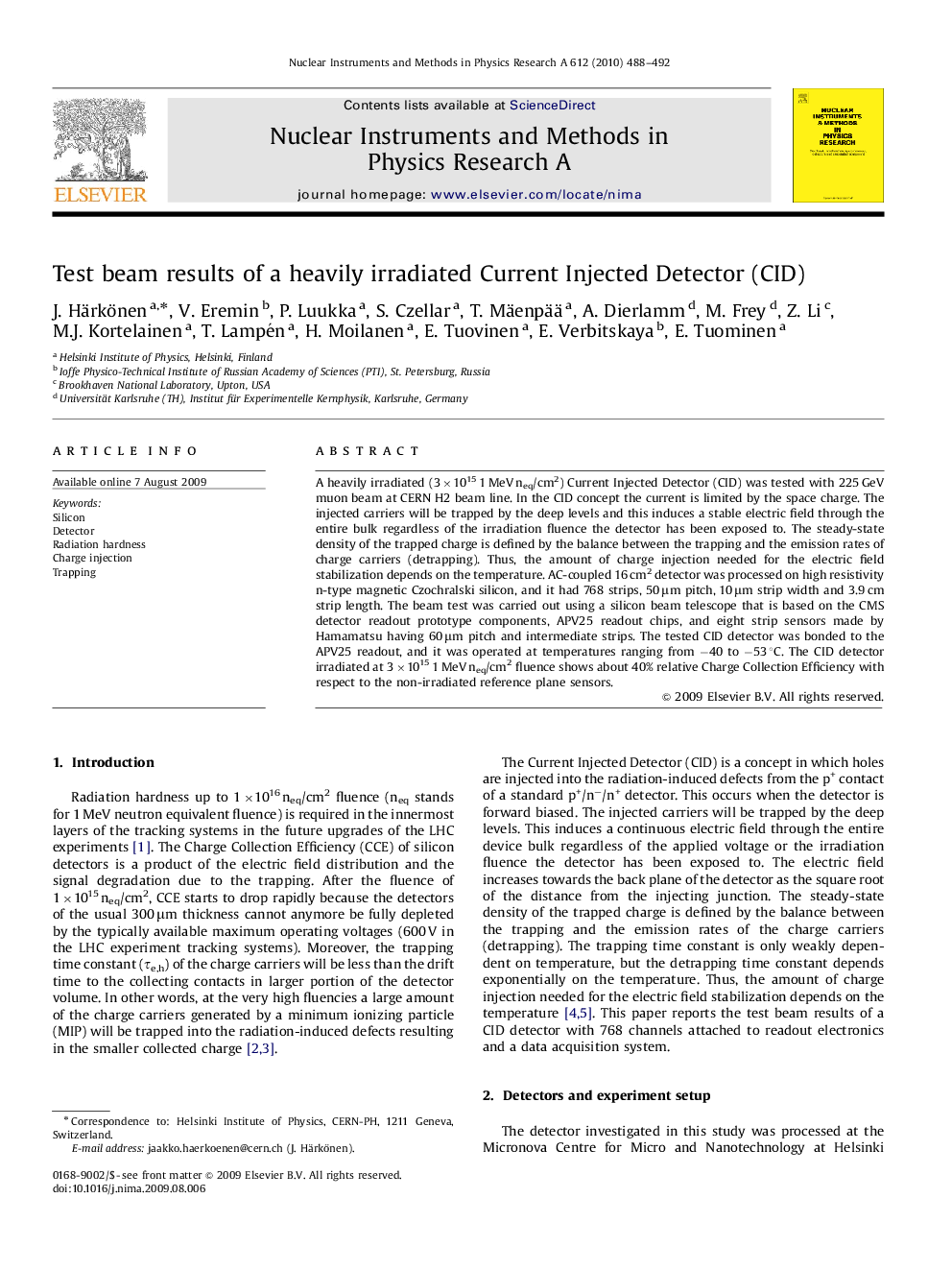| Article ID | Journal | Published Year | Pages | File Type |
|---|---|---|---|---|
| 1827107 | Nuclear Instruments and Methods in Physics Research Section A: Accelerators, Spectrometers, Detectors and Associated Equipment | 2010 | 5 Pages |
A heavily irradiated (3×1015 1 MeV neq/cm2) Current Injected Detector (CID) was tested with 225 GeV muon beam at CERN H2 beam line. In the CID concept the current is limited by the space charge. The injected carriers will be trapped by the deep levels and this induces a stable electric field through the entire bulk regardless of the irradiation fluence the detector has been exposed to. The steady-state density of the trapped charge is defined by the balance between the trapping and the emission rates of charge carriers (detrapping). Thus, the amount of charge injection needed for the electric field stabilization depends on the temperature. AC-coupled 16 cm2 detector was processed on high resistivity n-type magnetic Czochralski silicon, and it had 768 strips, 50 μm pitch, 10 μm strip width and 3.9 cm strip length. The beam test was carried out using a silicon beam telescope that is based on the CMS detector readout prototype components, APV25 readout chips, and eight strip sensors made by Hamamatsu having 60 μm pitch and intermediate strips. The tested CID detector was bonded to the APV25 readout, and it was operated at temperatures ranging from −40 to −53 °C. The CID detector irradiated at 3×1015 1 MeV neq/cm2 fluence shows about 40% relative Charge Collection Efficiency with respect to the non-irradiated reference plane sensors.
